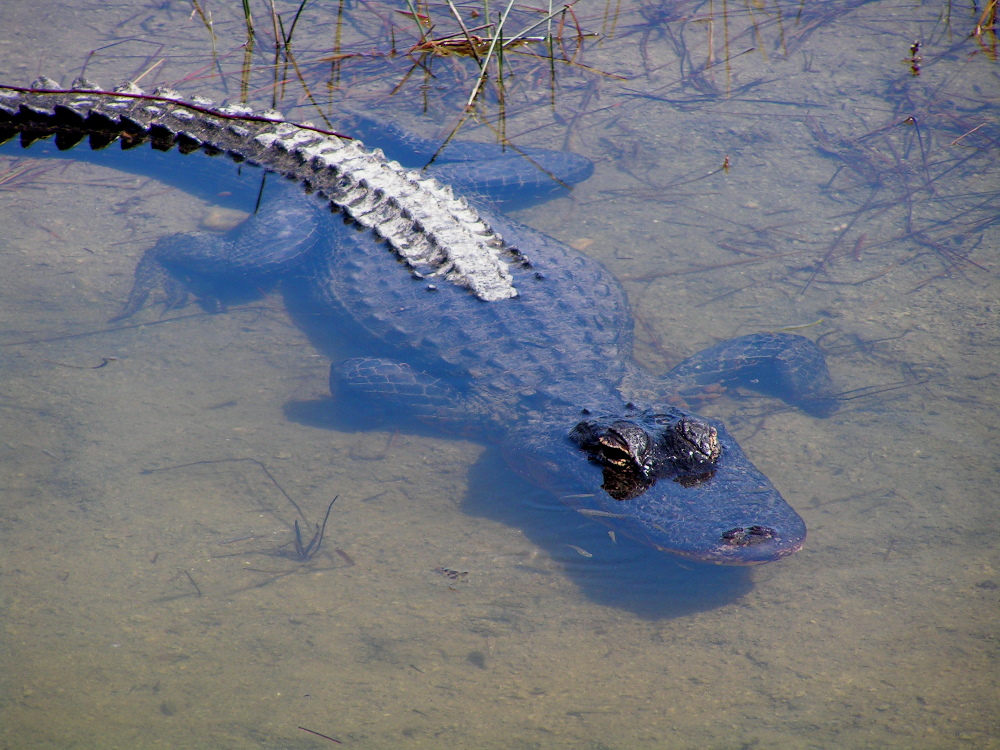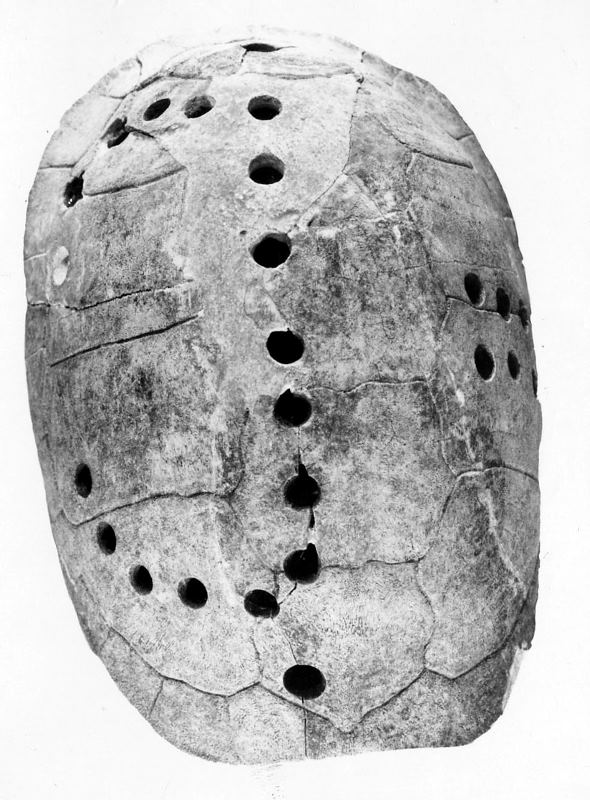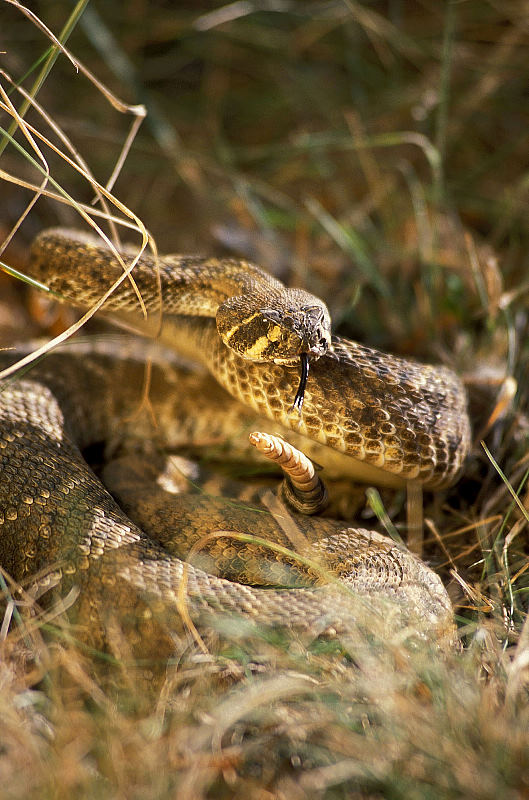Reptiles
The natives of the coastal prairies and marshlands of Texas exploited a diverse array of reptiles including turtles, tortoises, snakes, frogs, alligators, and lizards. These reptiles made their homes in varied environments— delta, estuary, and riparian zones— of the Texas coast. Some reptiles, like turtles and tortoises, comprised a major portion of the diet of coastal natives. Slow-moving and docile, these shelled creatures were easily procured, and their remains are ubiquitous in archeological sites along the Texas coast. Their meat was a good source of protein, and their shells, or carapaces, could be utilized for containers or ritual rattles. A specimen recovered from a child�s burial at the Caplen Site (41GV1) contains multiple decorative drill holes, and several small pebbles were found inside, indicating its use as a rattle.
Other, more deadly, reptiles, such as snakes and alligators, were more difficult to procure and apparently were only an infrequent component of the native diet. However, these dangerous and aggressive reptiles were exploited for utilitarian purposes as well. According to ethnographic accounts, the Karankawa covered their limbs in alligator grease to repel mosquitoes that infested the stagnant waters of the coastal plains. Snakes also occasionally were eaten, and their vertebrae were also strung into elaborate necklaces. Procurement strategies for these animals even included using poison-tipped arrows, according to some ethnographic accounts.
Numerous bones of alligator (Alligator mississippiensis) and eastern box turtles (Terrapene carolina) were recovered at the Clear Creek site (41GV53) near Galveston Bay. The Mitchell Ridge site (41GV66) bore remains of these reptiles as well as rattlesnake. A site near the Rio Grande Delta in Willacy County (41WY50) yielded bones of Texas tortoises (Gopherus berlandieri) and a diverse assemblage of box turtles.


